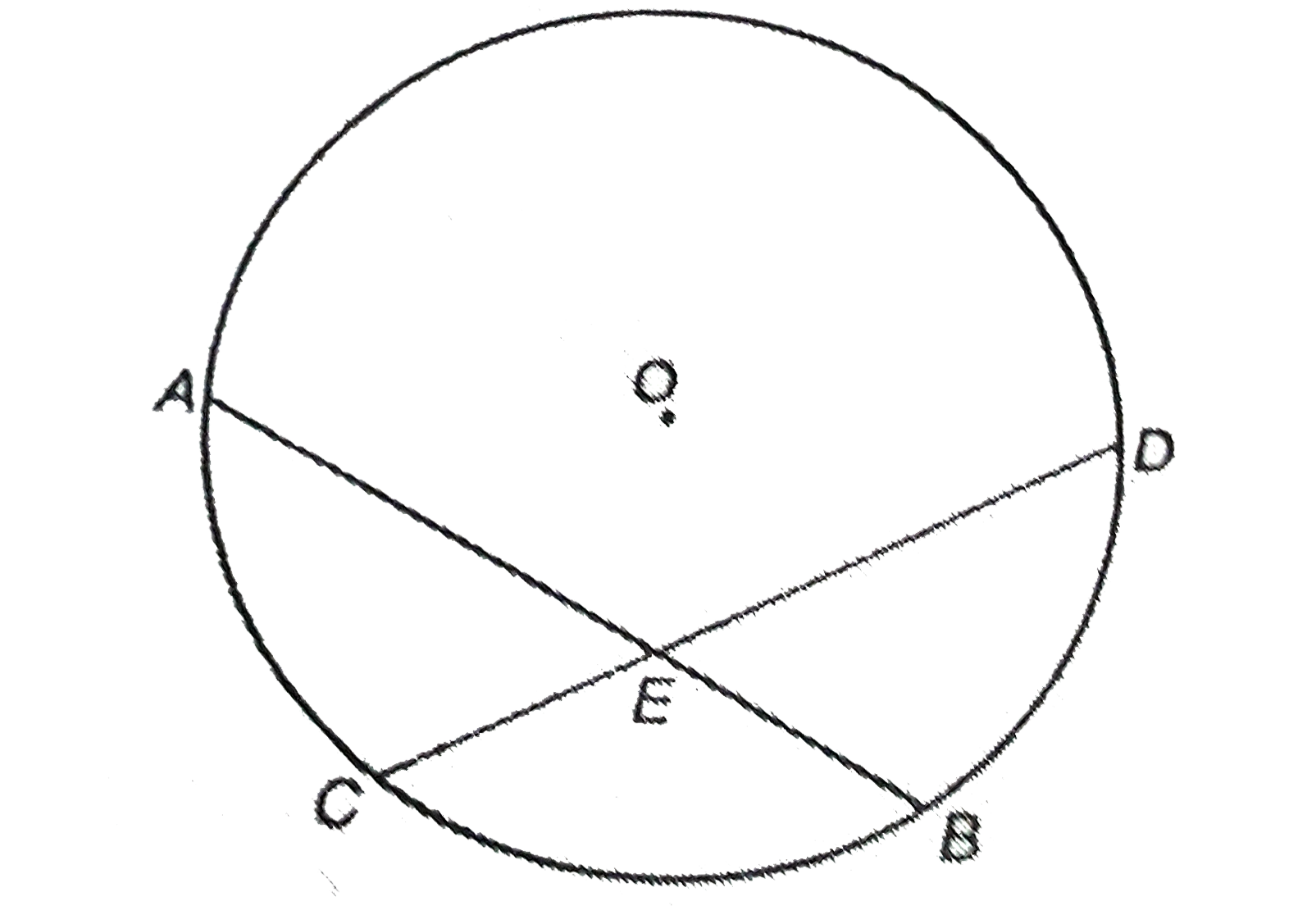AC and BD are chords of a circle which bisect each other. Prove that (i) AC and BD arediameters, (ii) ABCD is a rectangle
To prove the statements given in the question, we will follow these steps:
Step 1: Draw the Diagram
Draw a circle and label two chords AC and BD such that they bisect each other at point O.
Step 2: Identify the Equal Segments
Since AC and BD bisect each other at O, we have:
- AO = OC (let's denote this length as x)
- BO = OD (let's denote this length as y)
Step 3: Establish Parallelogram Properties
Since the diagonals of quadrilateral ABCD (formed by joining points A, B, C, and D) bisect each other, we can conclude that ABCD is a parallelogram. This is based on the property that in a parallelogram, the diagonals bisect each other.
Step 4: Use Opposite Angles Property
In a parallelogram, opposite angles are equal. Let’s denote angle AOB as x and angle COD as y. Therefore, we have:
- Angle AOB = Angle COD = x
- Angle BOC = Angle AOD = y
Step 5: Apply Cyclic Quadrilateral Property
Since ABCD is a cyclic quadrilateral (all vertices lie on the circumference of the circle), we know that the sum of opposite angles is 180 degrees:
- Angle AOB + Angle COD = 180 degrees
- Therefore, x + y = 180 degrees
Step 6: Relate Angles
Since we have established that angle AOB = angle COD, we can substitute:
- 2x = 180 degrees
- Thus, x = 90 degrees
Step 7: Conclude that AC is a Diameter
Since angle AOB = 90 degrees, we can conclude that AC is a diameter of the circle (as the angle subtended by a diameter at the circumference is always 90 degrees).
Step 8: Prove BD is also a Diameter
By similar reasoning, we can show that angle BOD = 90 degrees, which means that BD is also a diameter of the circle.
Step 9: Prove ABCD is a Rectangle
Since ABCD is a parallelogram and we have shown that one angle (let's say angle AOB) is 90 degrees, all angles in the parallelogram must also be 90 degrees. Therefore, ABCD is a rectangle.
Final Conclusion
1. AC and BD are diameters of the circle.
2. ABCD is a rectangle.
---
Draw a circle and label two chords AC and BD such that they bisect each other at point O.
Since AC and BD bisect each other at O, we have:
- AO = OC (let's denote this length as x)
- BO = OD (let's denote this length as y)
Since the diagonals of quadrilateral ABCD (formed by joining points A, B, C, and D) bisect each other, we can conclude that ABCD is a parallelogram. This is based on the property that in a parallelogram, the diagonals bisect each other.
In a parallelogram, opposite angles are equal. Let’s denote angle AOB as x and angle COD as y. Therefore, we have:
- Angle AOB = Angle COD = x
- Angle BOC = Angle AOD = y
Since ABCD is a cyclic quadrilateral (all vertices lie on the circumference of the circle), we know that the sum of opposite angles is 180 degrees:
- Angle AOB + Angle COD = 180 degrees
- Therefore, x + y = 180 degrees
Since we have established that angle AOB = angle COD, we can substitute:
- 2x = 180 degrees
- Thus, x = 90 degrees
Since angle AOB = 90 degrees, we can conclude that AC is a diameter of the circle (as the angle subtended by a diameter at the circumference is always 90 degrees).
By similar reasoning, we can show that angle BOD = 90 degrees, which means that BD is also a diameter of the circle.
Since ABCD is a parallelogram and we have shown that one angle (let's say angle AOB) is 90 degrees, all angles in the parallelogram must also be 90 degrees. Therefore, ABCD is a rectangle.
1. AC and BD are diameters of the circle.
2. ABCD is a rectangle.
Topper's Solved these Questions
- CIRCLESBOOK - NCERT ENGLISHCHAPTER - CIRCLESEXERCISE - Exercise 10.4
6 Videos
- CIRCLESBOOK - NCERT ENGLISHCHAPTER - CIRCLESEXERCISE - Exercise 10.1
2 Videos
- AREAS OF PARALLELOGRAMS AND TRIANGLESBOOK - NCERT ENGLISHCHAPTER - AREAS OF PARALLELOGRAMS AND TRIANGLESEXERCISE - Solved Examples
4 Videos
- CONSTRUCTIONSBOOK - NCERT ENGLISHCHAPTER - CONSTRUCTIONSEXERCISE - EXERCISE 11.2
5 Videos
Similar Questions
AC and BD are chords of a circle that bisect each other. Prove that:
(i) AC and BD are diameters
(ii) ABCD is a rectangle.
View SolutionACandBD are chords of a circle which bisect each other. Prove that (i) ACandBD are diameters (ii) ABCD is a rectangle.
View SolutionAC and BD are chords of a circle which bisect each other. Prove that
(i) AC and BD are diameters
(ii) ABCD is a rectangle
View SolutionACandBD are chords of a circle that bisect each other. Prove that: (i)ACandBD are diameters (ii)ABCD is a rectangle.
View SolutionACandBD are chords of a circle that bisect each other. Prove that: ACandBD are diameters ABCD is a rectangle.
View SolutionIn the adjoining figure. If two equal chords AB and CD of a circle intersect each other at E. then prove that chords AC and DB are equal.

View SolutionProve that the diagonals of a rectangle bisect each other and are equal.
View SolutionIn the adjoining figure, O is the centre of a circle in which AB and CD are two diameters. Prove that AC| |BD and AD| |BC. If ∠OBD=50∘, then find the value of ∠AOC.

View Solution−−→ACand−−→BD are the diagonals of a parallelogram ABCD. Prove that
(i)−−→AC+−−→BD−2−−→BC
(ii) −−→AC−−−→BD−2−−→AB
View SolutionIn the quadrilateral ABCD, the diagonals AC and BD are equal and perpendicular to each other. What type of a quadrilateral is ABCD?
View Solution
